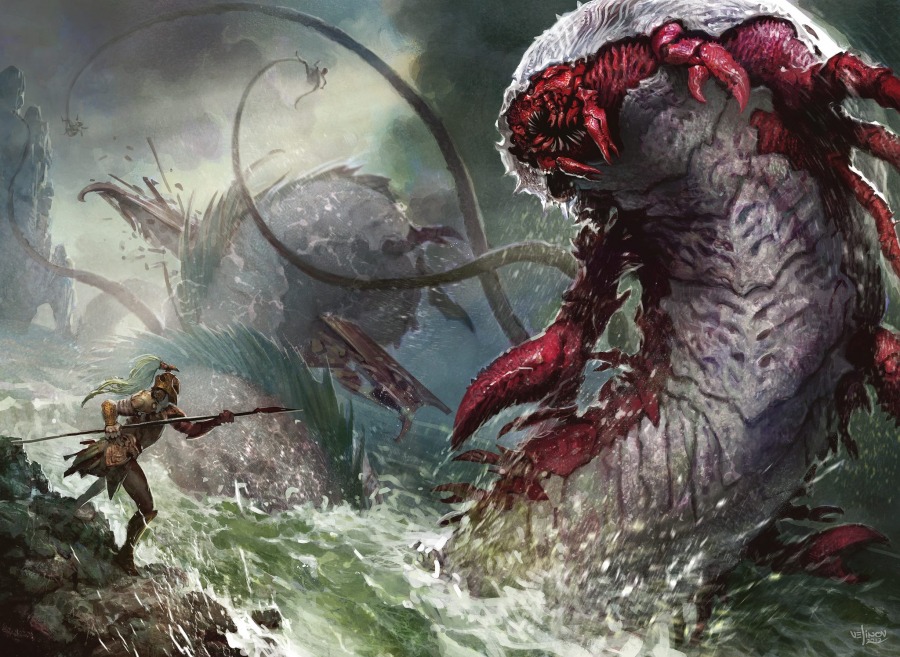Kraken
by hughpierre
Basic Information
Anatomy
Hard Shell
The exoskeleton grows in segmented curl that is periodically shed to grow a new one.Pincers
Two large claws in front of their head used to hold and crack prey or to burrow into holes.Bristle Legs
Many pairs of legs on the thorax are segmented and jointed for walking and swimming.Biological Traits
Spiral Shells
The shells are a single, conical tube coiled into a 360° spiral growth reminiscent of mollusk shells. It is noticed that adult krakens have few turns in their shell than the younger ones, due to rapid expansion of the tube's conical shape.Observations of adult shells are certainly restricted to the dead ones beneath Eeat, but we do catch and eat the small ones they sell in the market.
Growth Rate & Stages
Soft Shrimp Stage
At birth they are squishy, translucent and microscopic. At this stage they are entirely subject to the ocean currents scattering a brood every which way and subject to wide spread predation.Hard Lobster Stage
A moderately hard shell starts to develop once the younglings reach a certain size. They spend most of their time ambushing small prey from some hiding spot.Soft Octo Stage
A kraken at this stage is alternating between ambush and active hunting tactics. This is because they are constantly growing, shedding and regrowing their exoskeleton as their softer bodies experience a growth spurt in size and tentacles.Hard Octo Stage
The final growth stage is where the kraken shell takes on its famous spiral and becomes a permanent home for its head to retract. By contrast, its armoured pincers and some of its tentacled legs are permanently outside the shell.Ecology and Habitats
Deep Sea
A long stretch of open ocean that extends well pass the Brine Marshes and the Merrows in the north and similarly pass Giantsfall and continuing onto areas that are home to unfamiliar civilizations.
It i extremely rare to see an adult kraken as they spend their entire time in the deepest sea. The lowest depths of the sea, where little light reaches, is also said to be home to similarly large animals and smaller fish with a vicious visage.
Biological Cycle
Molting
Molting is when a baby kraken leaves its tight-fitting exoskeleton to begin growing a larger one. During the shrimp stage, krakens will molt the most often due how to fast they grow, between 1 to 2 weeks. So much so, that their shells rarely have time to harden all the way. At the lobster stages, a kraken will molt every 3 to 4 weeks. The soft octo stage is the last phase in life where krakens will molt. From that point on, their shell is permanent.Additional Information
Uses, Products & Exploitation
Eeat Foundation
Being a curious cross between a slug and a crab. Young samples of this rare crustacean are more often dredged from the depths of the pearl sea during tidal surges expected in the flood season.
These finger sized babies are scoped all the time in a fishermen's nets and added ignobly into fish broth and stews.A far cry from when they grow big. Three massive spiral shells of long dead Krakens are large enough to form the foundation to Eeat.
Lifespan
Suspect 1000 years
Body Tint, Colouring and Marking
Bluish Grey, but turns Reddish Pink when cooked
Facial characteristics
Shrimp-like squashed face
Facial characteristics
Shrimp-like squashed face
Geographic Distribution
Related Ethnicities
Related Materials




Comments